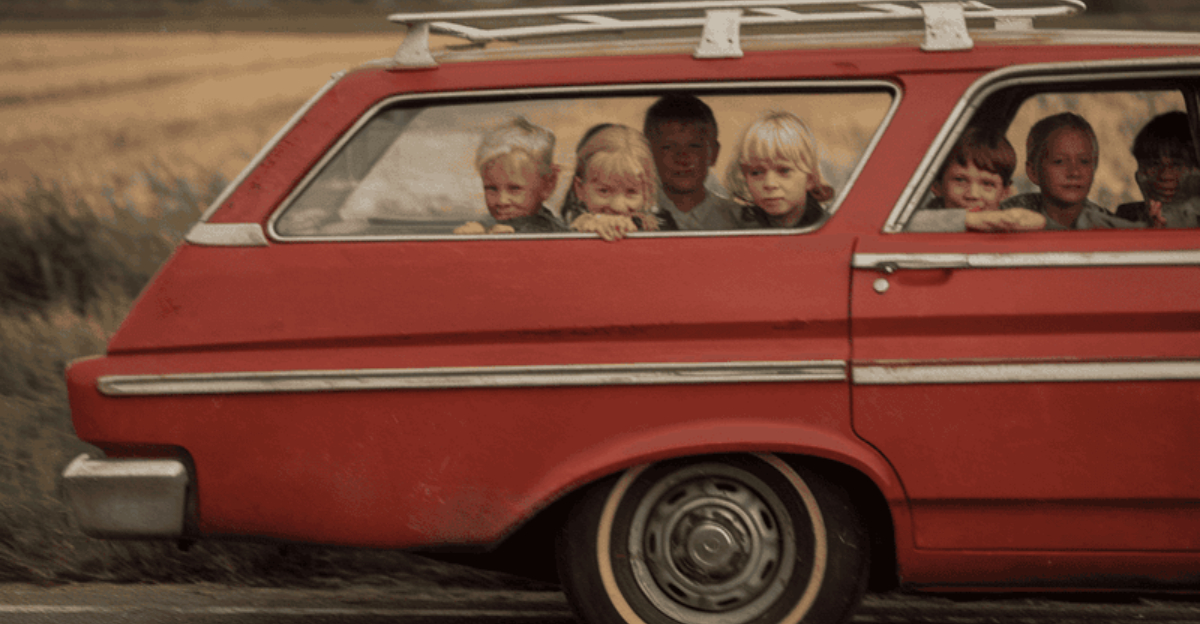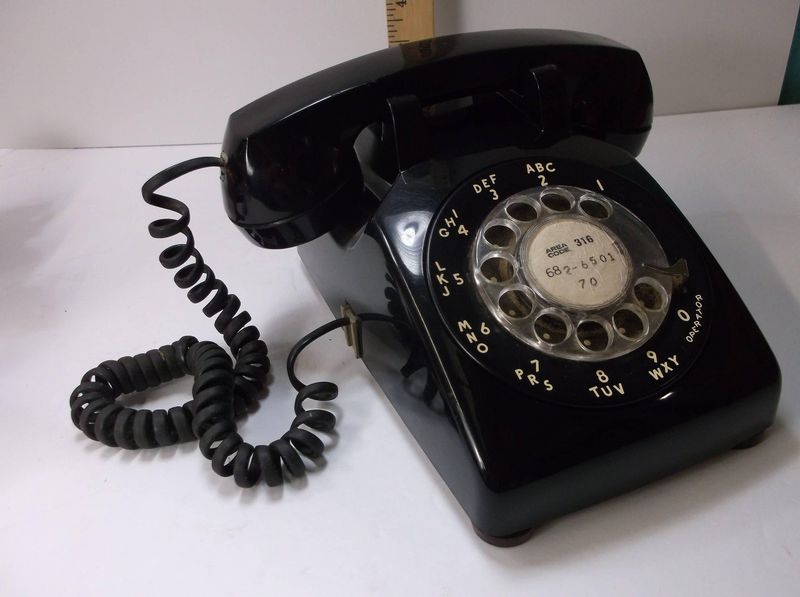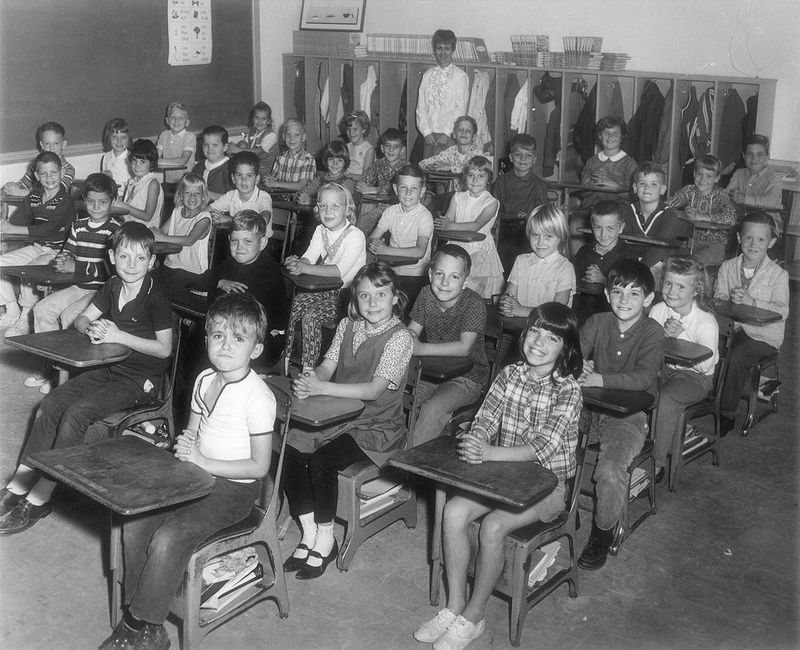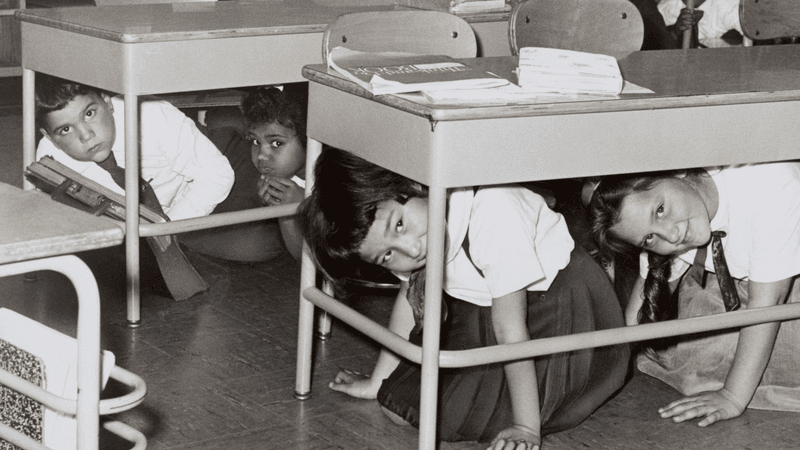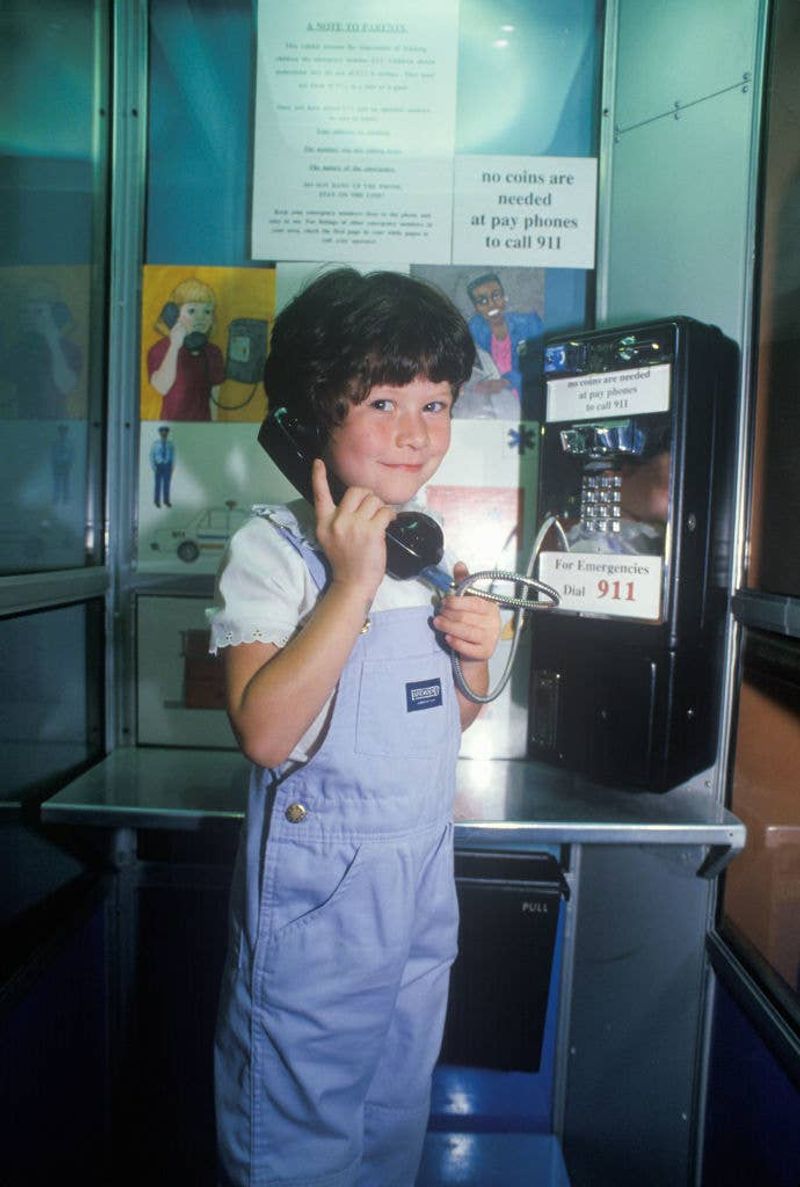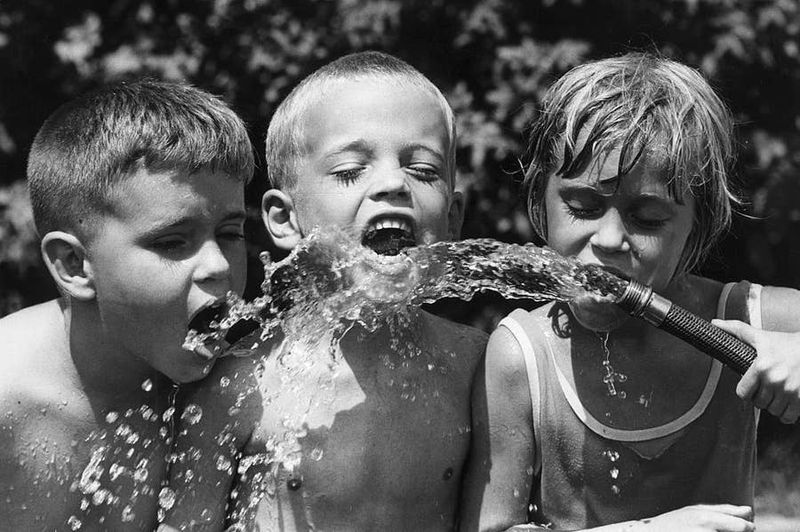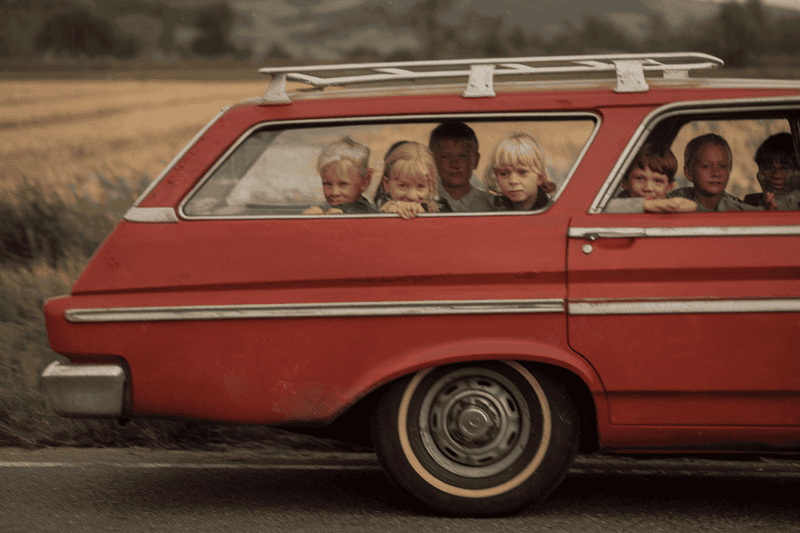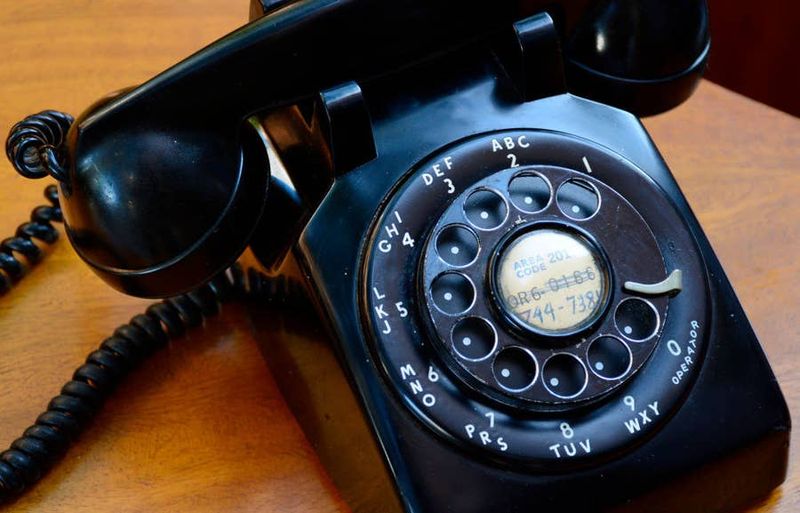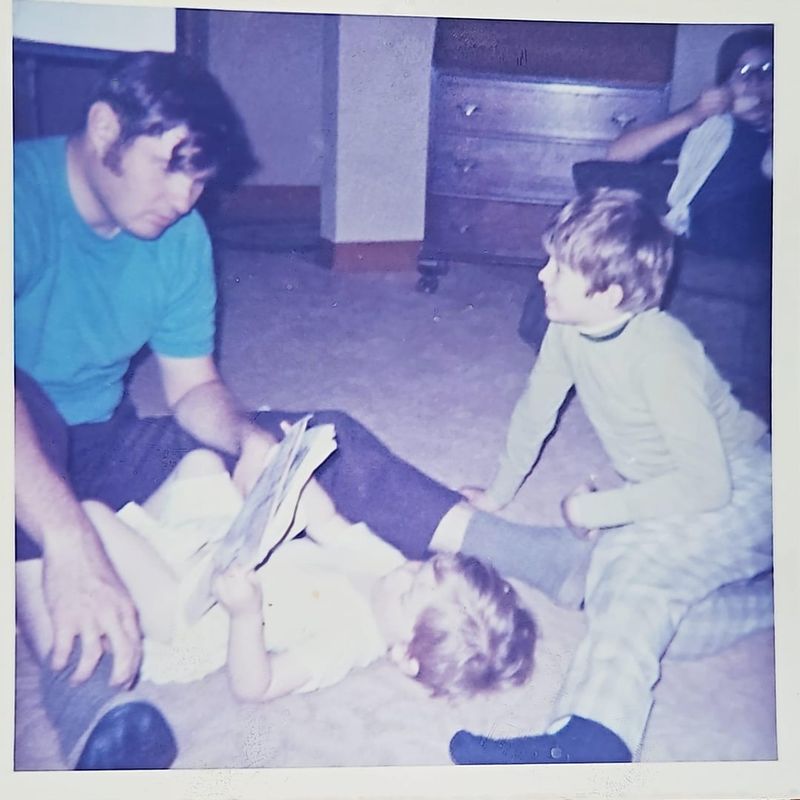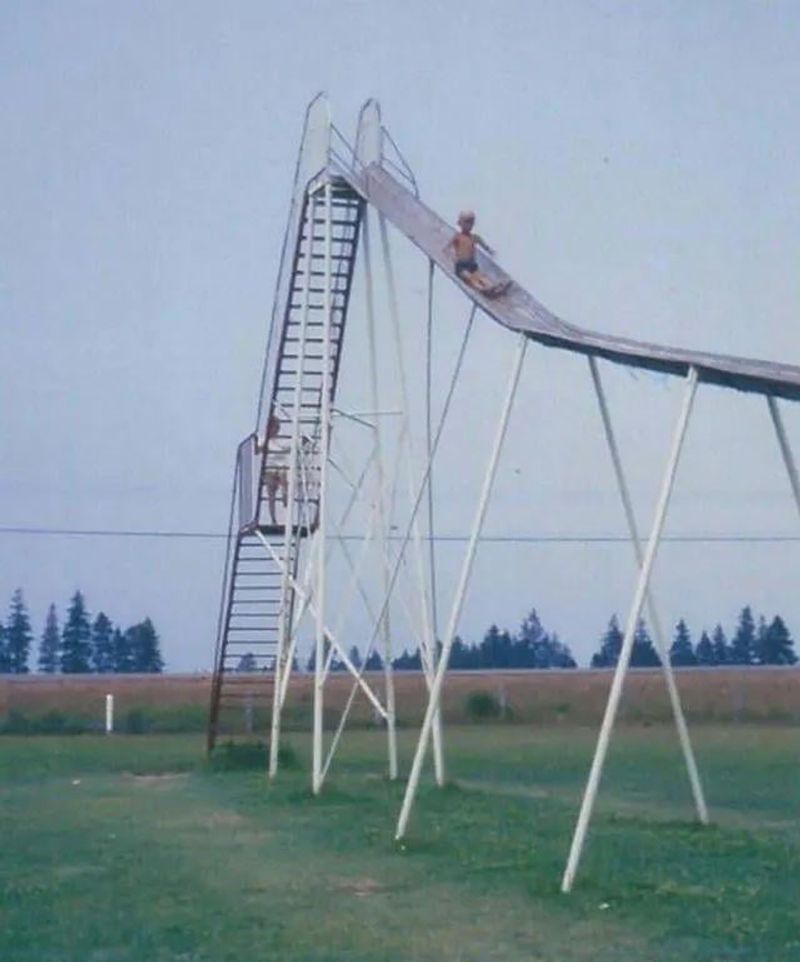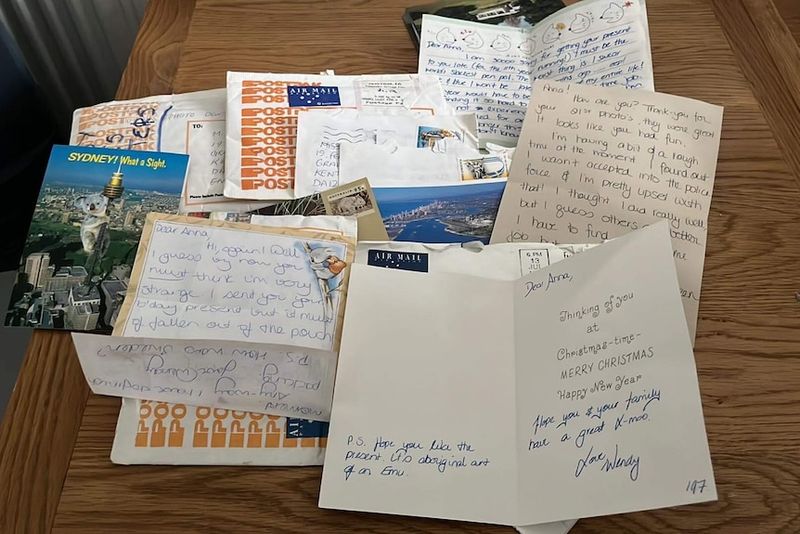Remember a world without smartphones, internet, or instant everything? Baby Boomers navigated childhood without modern conveniences that today’s kids take for granted. Growing up between the 1940s and 1960s required patience, creativity, and resilience that shaped an entire generation. Let’s explore how dramatically different life was before technology transformed our daily experiences.
1. Walking Miles to School
Rain, snow, or sunshine – the daily trek to school was non-negotiable. Kids trudged for miles along unpaved roads, crossing fields and neighborhoods with lunch pails in hand. No parents lined up in SUVs for drop-offs.
School buses were luxuries reserved for rural routes, not suburban neighborhoods. The journey built independence and weather-hardiness that today’s children rarely develop.
Boomers recall these walks as character-building adventures filled with shortcuts through woods, conversations with friends, and seasonal landmarks that marked the passage of time. The daily pilgrimage fostered self-reliance that’s increasingly rare in our door-to-door transportation era.
2. Sharing a Single Family Phone
The black rotary phone mounted on the kitchen wall served as the family’s sole communication hub. Everyone within earshot could listen to your conversation – privacy was non-existent. Long-distance calls were expensive luxuries saved for special occasions.
Phone etiquette was serious business: answer promptly, take messages accurately, and never tie up the line for hours. Teenagers negotiated time limits while siblings impatiently waited their turn.
Missing an important call meant truly missing it – no voicemail, no callback notification. The shared phone taught patience, brevity, and consideration that today’s private smartphone culture rarely demands of young users.
3. Math Without Calculators
Multiplication tables weren’t just for memorizing – they were essential survival tools for daily math. Students worked through complex problems using pencil and paper, showing every step of long division and algebra without digital assistance.
Slide rules accompanied advanced students through high school and college courses. Mental math was a practiced skill, not an optional talent.
Mistakes meant starting over, erasing until the paper wore thin. This mathematical boot camp built neural pathways and problem-solving abilities that calculator-dependent kids might never develop. The satisfaction of cracking a difficult equation through pure brainpower created confidence that instant digital solutions can’t replicate.
4. Duck and Cover Drills
“Duck and cover” wasn’t a playground game but a sobering reality of Cold War childhood. The threat of nuclear annihilation loomed over everyday life, with classroom drills teaching children to hide under desks at the first sign of atomic attack.
School hallways doubled as fallout shelters lined with emergency supplies. Government pamphlets instructing families on bunker preparation arrived in mailboxes alongside Christmas catalogs.
These drills instilled an existential awareness rarely experienced by today’s youth. Children processed genuine fear of world-ending scenarios while continuing with spelling tests and recess. This strange juxtaposition of nuclear anxiety and normal childhood shaped a generation’s worldview in ways modern safety drills never could.
5. Memorizing Phone Numbers
Your mental Rolodex contained dozens of seven-digit combinations – friends, family, neighbors, and emergency services all committed to memory. No contacts list rescued you when calling from a pay phone with limited coins.
Phone books served as analog databases, but finding someone meant knowing their approximate spelling and city. Friends moving meant memorizing new numbers or losing touch entirely.
This cognitive exercise strengthened memory pathways that today’s smartphone-dependent children rarely develop. The satisfaction of dialing from memory created connections that tapping a saved contact can’t replicate. Emergency numbers weren’t just stored somewhere in a device – they were instantly accessible knowledge that could save lives when seconds counted.
6. Drinking from Garden Hoses
Sun-warmed water from rubber garden hoses quenched summer thirst without a second thought. No filtered bottles accompanied neighborhood games that stretched from morning until dinner call.
The distinctive taste – part rubber, part metal, part adventure – remains a sensory memory that bottled water can never replicate. Sharing this communal drinking fountain built immunities alongside friendships.
Today’s children, surrounded by personalized hydration options and warnings about contaminants, miss this simple pleasure of unfiltered childhood. The garden hose represented freedom from helicopter parenting and excessive caution – a direct connection to resources without intermediary adult approval or safety inspections.
7. Unsupervised Outdoor Play
Neighborhood boundaries expanded with age, creating ever-widening territories for exploration without adult supervision. Children disappeared after breakfast, constructed elaborate hideouts, resolved conflicts independently, and returned home when streetlights flickered on.
Parents remained blissfully unaware of precise locations or activities. Broken bones, creek crossings, and chance encounters became character-building experiences rather than lawsuit triggers.
This freedom fostered risk assessment skills and social navigation abilities rarely developed under constant surveillance. Kids created their own entertainment from available materials – sticks transformed into swords, empty lots became baseball diamonds, and bike paths led to uncharted adventures. The phrase “go play outside” launched daily expeditions into a world where children wrote their own rules.
8. Car Rides Without Seatbelts
Station wagons transported entire baseball teams without a single seatbelt in use. Children sprawled across back seats, stood between parents in front, or enjoyed the premium real estate of rear cargo areas during family road trips.
Pickup trucks regularly carried kids in open beds down country roads. The wind in your hair and the thrill of unrestrained movement were standard travel experiences.
Car safety consisted primarily of a parent’s outstretched arm during sudden stops. This casual approach to transportation safety seems unimaginable in today’s world of car seats, booster requirements, and strict seatbelt laws. While undeniably dangerous by modern standards, these unrestrained journeys symbolize a different risk calculation era that shaped Boomer perspectives on freedom versus safety.
9. Mastering Rotary Phones
Dialing demanded precision and patience – one finger slipped and you’d start over. The satisfying mechanical whir as the dial returned to position marked each successful number entry, with long-distance codes adding extra complexity.
Finding numbers meant flipping through dog-eared phone books or personal address notebooks. Pay phones required physical coins and perfect timing.
Busy signals meant genuine unavailability – no call waiting interrupted conversations. Phone cords tethered you to specific locations, with stretched coils allowing limited movement for privacy. This physical connection to communication technology taught mechanical understanding and patience that touchscreens never demand. The tactile experience created a meaningful relationship with technology that required skill rather than merely consumption.
10. Film Photography Limitations
Twenty-four precious exposures on a roll of film meant choosing photo opportunities carefully. No instant previews confirmed successful captures – you discovered missed moments or closed eyes weeks later when prints finally arrived.
Family photographers developed specialties in framing, lighting, and timing through costly trial and error. Special occasions warranted extra film rolls, stored carefully until processing money became available.
Photo albums preserved curated selections rather than endless digital archives. Each physical print represented financial investment and deliberate choice. This photography economy taught patience, selective memory-making, and appreciation for skilled image capture that digital abundance has largely eliminated. The anticipation of developing photos created emotional investment in the results that immediate digital gratification rarely matches.
11. Limited Television Options
Three network channels offered strictly scheduled programming viewed through static-prone antennas adjusted for optimal reception. Missing your favorite show meant waiting months for summer reruns – no streaming, no recording options.
TV watching was communal family activity with negotiated channel selection. Adjusting rabbit ears became an art form, often requiring human antenna assistance (standing in specific positions to improve reception).
Saturday morning cartoons represented the only child-focused programming block, creating weekly viewing rituals. The national collective experience of watching moon landings, presidential addresses, and series finales together created shared cultural touchpoints across geographic regions. This limited media diet contrasts sharply with today’s personalized streaming universe where viewers rarely experience simultaneous content discovery.
12. Encyclopedia Research Projects
School reports began with encyclopedia expeditions – hefting leather-bound volumes from library shelves to discover information available nowhere else. Alphabetical organization meant understanding categorization and developing research strategies beyond “search and click.”
Knowledge had physical weight and occupied real space. Limited access to reference materials meant scheduling library visits during specific operating hours.
Copying facts by hand onto notecards taught information processing and prevented plagiarism through forced rewriting. The effort required to gather information created deeper retention and appreciation for knowledge accessibility. Young researchers developed patience and persistence through multi-step information gathering that instant internet searches have largely eliminated. This research methodology built foundational skills in evaluation, organization, and synthesis still valuable in digital environments.
13. Creating Radio Mixtapes
Finger hovering over the record button, you waited through commercials and DJ chatter for favorite songs to begin. Perfect timing was essential – miss the first notes or capture unwanted radio banter, and you’d try again next broadcast.
Creating personalized music collections required patience, strategy, and luck. Radio station schedules influenced recording sessions, with late-night hours offering the best selection.
These handcrafted musical time capsules represented significant time investment and personal expression. Customized labels and cases transformed blank cassettes into meaningful gifts that communicated feelings words couldn’t express. The mixtape creation process – requiring attention, dedication, and technical skill – contrasts sharply with today’s instant playlist generation and unlimited music access.
14. Metal Playground Equipment
Playground equipment doubled as impromptu physics lessons in momentum and heat transfer. Metal slides burned legs on summer days while reaching scorching temperatures that would violate safety codes today.
Merry-go-rounds spun at dizzying speeds with nothing but centrifugal force keeping riders attached. Towering metal jungle gyms lacked safety surfaces below – just packed dirt waiting for inevitable falls.
These adventure zones built risk assessment abilities through natural consequences rather than warning labels. Playground injuries were considered normal childhood experiences rather than reasons for equipment recalls or litigation. The unforgiving nature of these play spaces taught physical limitations, cooperation, and resilience through experiences that bubble-wrapped modern playgrounds rarely provide. Survival required developing skills rather than relying on safety features.
15. Handwritten Letter Correspondence
Blue aerogrammes and decorative stationery carried heartfelt messages across distances at the speed of postal service. Finding a personal letter in the mailbox sparked joy no email notification can match.
Correspondence required thoughtful composition – no delete key erased mistakes on carefully planned pages. Handwriting revealed personality and emotion through pressure, slant, and style.
Pen pals from distant locations opened windows to different cultures through exchange of physical artifacts. Summer camp letters created anticipation and connection during weeks of separation. The deliberate pace of letter writing taught careful communication and patience that instant messaging has largely eliminated. The investment of time, materials, and postage added weight to written words that digital communication rarely achieves.
